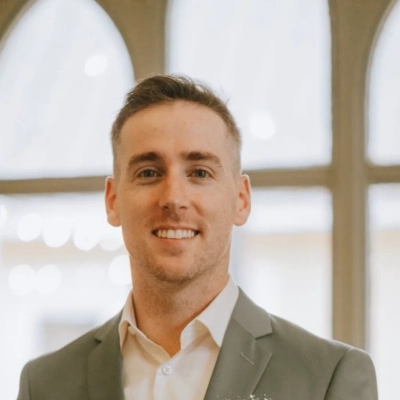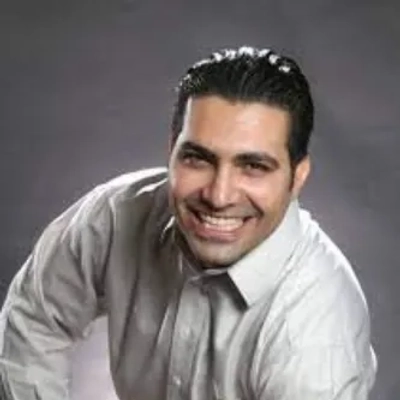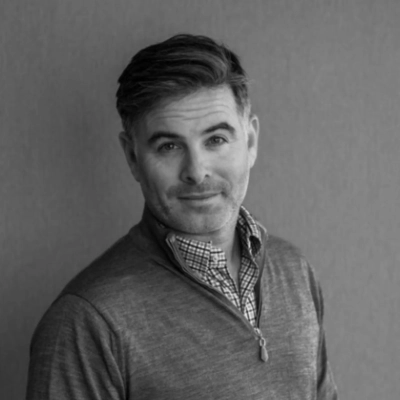Startup Setbacks: Entrepreneurs Share Resilience Strategies
Startup journeys are often riddled with unexpected challenges and setbacks. This article presents valuable strategies for building resilience, drawn from the experiences of seasoned entrepreneurs. Discover practical approaches to overcome obstacles, foster growth, and maintain a balanced perspective in the face of adversity.
- Slow Down to Speed Up
- Turn Setbacks into Internal Growth Opportunities
- Create a Pressure Valve Project
- Step Back for Clarity and Perspective
- Force Yourself to Disconnect and Recharge
- Implement Compartmentalized Recovery Strategies
- Embrace Team Wisdom Through Open Dialogue
- Schedule Downtime for Mental Clarity
- Balance Structured Action with Intentional Self-Care
- Take a Complete Break to Gain Resilience
- Transform Challenges into Learning Laboratories
- Find New Perspectives Through Physical Work
- Practice Transparency and Compartmentalize Stress
Slow Down to Speed Up
One of the toughest setbacks I faced in my startup was when a product launch fell flat after months of work. We had poured time, money, and energy into it, only to see adoption numbers come in way below expectations. The temptation to grind harder was strong, but I realized that pushing through without pause would have led straight to burnout — for me and the team.
The way I handled it was by deliberately slowing down before speeding up again. I set aside time to step back, reflect, and reset. Instead of obsessing over what went wrong in isolation, I scheduled honest conversations with the team and a few trusted mentors. Those dialogues created perspective: the setback wasn’t a failure of effort, it was a signal that we needed to adjust our approach.
The coping mechanism I’d recommend is creating structured recovery time. For me, that meant blocking a few hours each week for exercise, journaling, and non-work activities that helped me clear my head. It sounds simple, but giving myself permission to disconnect kept me from spiraling into exhaustion. When I came back to the problem, I had the mental bandwidth to see solutions we’d missed before.
The surprising outcome was that the reset didn’t just preserve my energy — it made the pivot sharper. We retooled the product based on clearer customer feedback and relaunched with far better traction. Looking back, if I’d tried to power through without that recovery time, we probably would have doubled down on the wrong path.
The biggest lesson: resilience isn’t about never hitting walls, it’s about how you recover when you do. For founders especially, rest isn’t indulgence — it’s strategy.
Turn Setbacks into Internal Growth Opportunities
When my SEO and PR firm lost a big client, the real setback wasn’t just the revenue drop. It was the fear of losing a team I had worked so hard to build. These were some of the best people I’d ever recruited, and I knew replacing them would be next to impossible.
In that moment, the challenge was figuring out how to keep morale and productivity up despite the reduced workload. I made the decision to pour extra resources into and shift the team’s focus to internal projects instead. This included things like improving our outreach systems, refining templates, and even experimenting with new channels. This way, they stayed engaged, and I avoided the bigger loss of having talent drift away.
Personally, what kept me grounded through that transition was keeping a progress journal of daily wins tied directly to our internal projects. Even one single win was enough of a reminder that the decision was paying off and progress, no matter how small, was still happening. That mindset helped us push through until new clients came in, and by then, the team was sharper and more prepared than before.
To anyone facing a similar setback, I definitely recommend adopting a progress journal. It can be awkward and strange at first, but it’s a simple yet effective mechanism to rewire your mind to think of setbacks as an investment period. And that perspective keeps both you and your team from burning out.
 Darcy Cudmore
Darcy Cudmore
Founder, RepuLinks
Create a Pressure Valve Project
One of the hardest setbacks we faced was when we launched a feature we thought would be a game-changer… and it flopped. Not quietly, either — we’d poured months of energy, money, and morale into it, only to watch engagement numbers flatline. The temptation in moments like that is to grind even harder, to “fix it” by sheer force. That’s how burnout creeps in.
What saved me was a weird rule I made for myself: when the business feels like it’s falling apart, go build something tiny and unrelated. For me, it was a silly side project — a browser extension I coded over a weekend that had nothing to do with my business. It sounds counterintuitive, but shifting my brain into builder-mode, with no stakes and no investors watching, recharged me in a way a vacation or a pep talk never could. It reminded me why I started in tech to begin with — because making stuff is fun.
The coping mechanism I’d recommend is this: give yourself a “pressure valve project.” Something you can create purely for yourself, outside the gravitational pull of your startup. It doesn’t have to be software — it could be woodworking, writing short stories, or designing a board game. The point is to keep one corner of your creative energy unhitched from business survival. That way, when the startup throws you into chaos (and it will), you still have a place to reconnect with the joy of creating.
 Derek Pankaew
Derek Pankaew
CEO & Founder, Listening.com
Step Back for Clarity and Perspective
One of the most challenging setbacks I faced in my startup journey was during a period when we unexpectedly lost a major client. At the time, that single client represented a significant portion of our revenue. Overnight, what felt like steady progress suddenly looked like we were back at square one. My first instinct was to panic — I stayed up late crunching numbers, rewriting projections, and trying to figure out how to replace the revenue as quickly as possible. However, after a week of running on adrenaline and little sleep, I realized I was heading straight for burnout.
What saved me in that moment wasn’t some grand strategy, but a shift in mindset. Instead of obsessing over what I couldn’t control — the client’s decision — I asked myself what this challenge was forcing me to see that I had been ignoring. The answer was clear: we were too dependent on a small handful of clients. Losing one shouldn’t have felt like the floor was collapsing. That realization hurt, but it also gave me a sense of clarity. We diversified our client base, built more recurring revenue streams, and within a year, we were stronger than before.
The coping mechanism I relied on most, and still recommend, is deliberately stepping back. I created a rule for myself: when I feel the spiral of stress kicking in, I take a half day away from the laptop — no calls, no Slack, no “just checking in.” Sometimes that meant going for a long run; other times, it was just sitting with a notebook and letting my mind reset. It felt counterintuitive in the middle of a crisis, but stepping back gave me perspective that I couldn’t find while trapped in the noise.
What I learned is that burnout doesn’t come from the setback itself — it comes from believing you have to solve everything instantly and alone. By creating space to think and by reframing setbacks as signals rather than failures, I was able to not only survive the moment but also build a healthier foundation for the company moving forward.
 Max Shak
Max Shak
Founder/CEO, nerDigital
Force Yourself to Disconnect and Recharge
I learned a hard lesson about what a “major setback” really is. When a big client didn’t pay a large invoice a while back, it was a massive hit to the business. My initial reaction was to panic. I thought I had to work even harder to make up for the lost money. I was working long days, stressing out, and not sleeping. I was heading straight for burnout.
My “coping mechanism” was a simple one, but it took everything in me to do it. I had to force myself to step away from the problem. I put the tools down for a full day, didn’t answer the phone, and just focused on clearing my head. I went for a walk, saw my family, and just let myself be. I learned that a tired mind can’t solve a problem, and that my panic was making things worse. It changed my perspective on the challenge; I realized that the problem wasn’t going to get solved by me just working more. It was going to get solved by me thinking more clearly.
The way I handled it was to come back with a clear plan. I called my accountant and my lawyer to figure out the best way to handle the unpaid invoice. I started looking for new work, but I was focused on getting the right jobs, not just any jobs. The problem wasn’t solved overnight, but I was in a much better place to handle it. I was in control, not running from the problem.
My advice for others facing similar challenges is simple: don’t try to outwork a problem. A rested mind is a smart mind, and a panicked mind makes mistakes. The best thing you can do when you’re facing a major setback is to put the tools down, clear your head, and come back to it with a clear plan. For a small business, a clear head is the most valuable tool you can have. It’s what allows you to survive and grow.
 Alex Schepis
Alex Schepis
Electrician / CEO, Lightspeed Electrical
Implement Compartmentalized Recovery Strategies
My biggest setback occurred three years ago when Google’s algorithm update eliminated 60% of our clients’ search rankings overnight. We had built our entire reputation on SEO optimization, and suddenly our “proven” techniques were penalized.
Instead of panicking or working 80-hour weeks, I implemented what I call “compartmentalized recovery.” I dedicated only two hours each morning to crisis management, then forced myself to spend afternoons on forward-looking research into AI and ethical SEO practices. This prevented the endless spiral of reactive fixes that usually leads to burnout.
The compartmentalization actually saved us because those afternoon research sessions led to discovering AI-powered content strategies that became our new competitive edge. Our recovery approach turned into our biggest growth opportunity — we now generate 40% more revenue than before the setback.
My one recommendation: Set strict time boundaries around crisis work. The urgency will always feel infinite, but your mental capacity isn’t. Some of your best solutions will come when you’re not drowning in the immediate problem.
 Shawn Shameli
Shawn Shameli
CEO, Hyper Web Design
Embrace Team Wisdom Through Open Dialogue
There was a point where I seriously questioned everything: the business, whether what I was doing actually mattered, if I was just talking into the void.
The burnout was real; I was also financially stressed after pouring much of what I had into the business. After years of clinical practice and then building a business around something as niche and specific as blister prevention, the isolation was overwhelming. Instead of grinding through it solo, I did something that felt uncomfortable at the time: I called a proper team meeting and put everything on the table.
We literally covered the walls with sticky notes. Every frustration, every goal we weren’t hitting, every doubt we’d been carrying individually. It was messy and emotional, not your typical business strategy session, but it cleared the air in a way that spreadsheets never could.
What came out of that raw conversation was a complete shift in direction. Instead of only focusing on direct consumer sales, we started exploring partnerships with pharmacies and healthcare providers, people who are actually involved with blisters at some point. That pivot didn’t just save the business; it reminded me why I’d started it in the first place.
As an entrepreneur, don’t try to carry everything yourself. When you hit that wall, and you will, create space for honest conversation with your team. Let everyone voice their concerns and ideas without judgment. Yes, it’s going to feel uncomfortable. Yes, you’re going to be vulnerable. But I’ve learned that shared problems become manageable problems. And sometimes the breakthrough you need is sitting right there in your team’s collective wisdom.
 Rebecca Rushton
Rebecca Rushton
Founder, Blister Prevention
Schedule Downtime for Mental Clarity
One of the hardest blows I ever took in my life was during the pandemic, when everything related to corporate events and travel shut down overnight. Income decreased drastically, and suddenly, everything we’d built felt like it was on hold. Instead of straining myself to make up for that lost business, I focused on smaller wins that were within our control: improving our booking system and investing more in training our drivers.
The coping tool I recommend is putting downtime into your schedule. For me, it was taking long evening walks without a phone; that allowed my mind to wander in its own way without constant interruptions or problems competing for attention. It’s easy to think you have to work even harder when things aren’t going your way, but often solutions are most visible when you step back and make space for yourself.
 Arsen Misakyan
Arsen Misakyan
CEO and Founder, Angel City Limo
Balance Structured Action with Intentional Self-Care
A major setback occurred when a key project fell through due to unexpected client changes. Initially, it felt overwhelming, but I knew pushing harder without pause would lead to burnout.
One coping mechanism that helped me was breaking the challenge into small, manageable tasks and focusing on what I could control each day. I also scheduled short periods of rest, journaling, and reflection to process emotions and gain clarity. Sharing the situation openly with my team allowed us to brainstorm solutions together, which lightened the mental load and created a sense of shared responsibility.
This approach helped me stay productive, make clear decisions, and protect my well-being. For other founders, I recommend combining structured action with intentional self-care. Facing setbacks is inevitable, but how you manage stress and energy determines whether the challenge becomes a growth opportunity or a source of burnout.
 Kritika Kanodia
Kritika Kanodia
CEO, Estorytellers
Take a Complete Break to Gain Resilience
Almost as soon as we launched, we ran into trouble. Our target audience was large enterprise companies looking for QR code solutions, and we quickly discovered that that market was saturated with big, well-resourced players who could effectively crowd us out of any relevant advertising channels. We had to go back to the drawing board and switch our focus to small businesses to survive. It’s worked out well for us, but things were dark for a while. The thing that helped me to think through it was to simply get away from it for a few days. I took a long weekend, turned off my phone, and went to the beach. When I came back, I didn’t have the solution, but I did have the attitude and resilience to find one.
 Jonathan Palley
Jonathan Palley
CEO, QR Codes Unlimited
Transform Challenges into Learning Laboratories
When I encountered a major setback in one of my ventures, it felt as if the foundation had been suddenly removed from beneath me. Revenue projections plummeted, partnerships dissolved, and it appeared that every plan we had was unraveling. The first action I took was to step back and take a deep breath. I allowed myself to acknowledge the frustration without letting it dictate my next steps. I made a conscious effort to separate my emotional reaction from the practical decisions that needed to be made.
From there, I focused on what I could control: realigning the team around clear priorities, re-examining our technological infrastructure, and exploring how we could integrate sustainability and recycling practices in ways that created genuine value. I also relied heavily on the people around me. Having mentors and peers who understood the market and could challenge my assumptions was crucial.
I established boundaries for work and ensured that I carved out time to recharge, even if it was just a walk or a brief break from screens. One coping mechanism I always recommend is to transform challenges into a learning laboratory. Document what went wrong, analyze what the data reveals, and consider how technological or operational adjustments can prevent similar occurrences in the future. This approach keeps your mind engaged and provides a sense of progress without leading to burnout.
 Neil Fried
Neil Fried
Senior Vice President, EcoATMB2B
Find New Perspectives Through Physical Work
My biggest setback in this business wasn’t a market disruption. It was a massive marketing campaign that completely failed. We had invested a significant amount of time and money in it, but it didn’t resonate with our audience. The initial response was to double down and work harder, but I could feel myself and my team getting burned out.
The one coping mechanism that saved me was creating a physical and mental distance from the problem. The day after the campaign failed, I didn’t try to fix it. Instead, I went to the warehouse and spent a day with my operations team. I wasn’t there to manage; I was there to work. I packed boxes, organized inventory, and did something that provided a physical and mental break from the problem.
This simple act gave me a new perspective. I realized that our business was more than just a single failed marketing campaign. It was a physical, tangible, and real entity that was still functioning and thriving. It was a huge mental shift. When I returned to the problem, I had a fresh perspective. We were able to find a new solution and a new path forward.
My advice is that you need to stop trying to fix a problem from the inside out. You have to step outside of it, give yourself some space, and come back with a new perspective. The best way to get through a difficult time is to give yourself a break. You’re not just a person who runs a business; you’re a human, and you need to take care of yourself.
 Illustrious Espiritu
Illustrious Espiritu
Marketing Director, Autostar Heavy Duty
Practice Transparency and Compartmentalize Stress
When an investor backed out, we avoided burnout by practicing radical transparency and ruthless compartmentalization. We shared the situation with the team, cut nonessential spending, and set daily “stress blocks” to work on the funding plan. Outside of those windows, we focused on serving students.
 Joaquin Calvo
Joaquin Calvo
Director, Comligo Spanish


